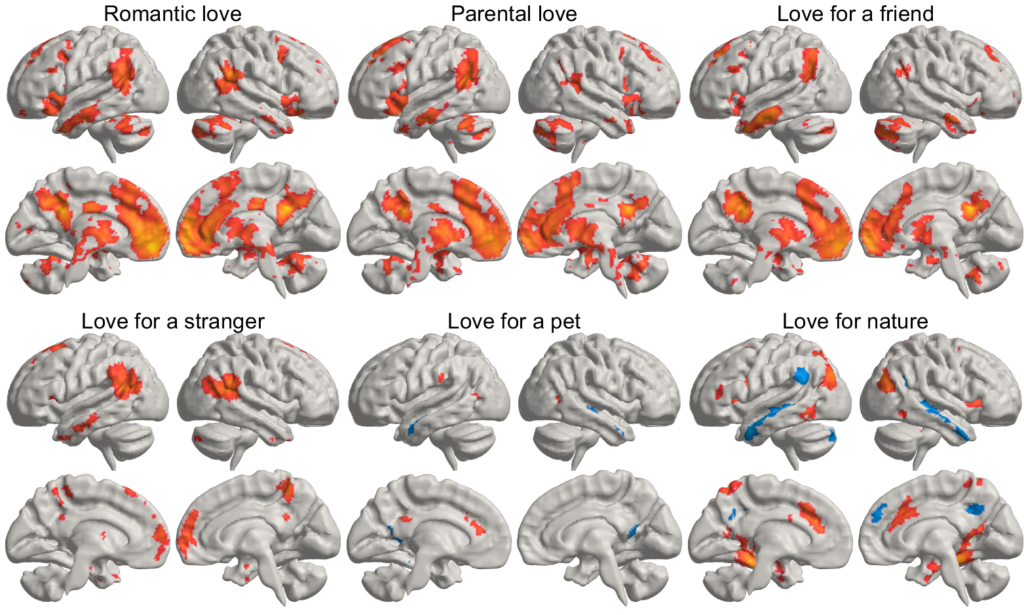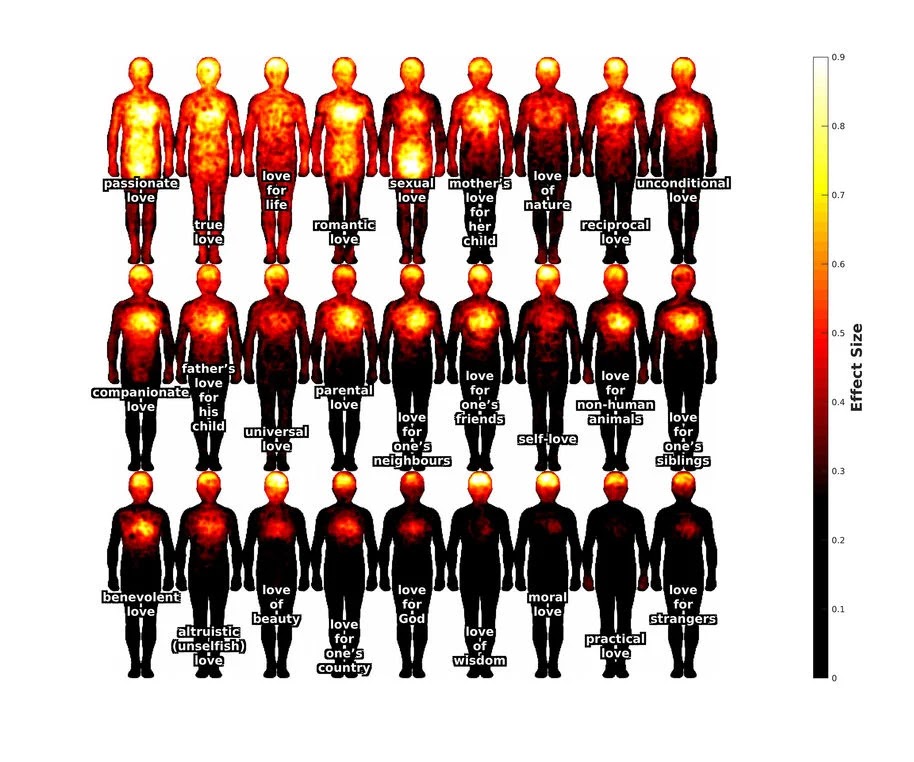Hi Palme School, We've gathered some new scientific research from the world of neurobiology. Today we're going to tell you what scientists have been researching and where love lives in our bodies.
How does our brain respond to love?
Researchers at the University of Finland did an experiment. They chose 6 types of love and tested which parts of the brain respond to each type. The study was conducted using fMRI - Functional magnetic resonance imaging.и.
We talked about other fMRI studies here Why do we love horror movies? Recent research. - Palme School.
For the experiment, the scientists suggested types of love:
- Romantic love.
- Parental love.
- Friendly love.
- Love for animals.
- Compassionate love for strangers.
- Love of nature.
The experiment was carried out in the following way: sensors were connected to the subject's brain and different situations were offered, then they studied which parts of the brain were more active than others.
- Situation for parents - "You are seeing your newborn baby for the first time. The baby is soft, healthy and strong - the greatest miracle of your life. You feel love for the baby."
- Situation for pet owners - "You are at home, sprawled out on the couch, and your favorite cat runs up to you. The cat curls up next to you and purrs sleepily. You love your pet."
et al.
It turns out that the most intense love is parental love, followed by romantic and friendship love. And brain activity is influenced by whether the object of love is a person or something else.
Here's how the scientists illustrated their experiment.
And how does love feel throughout the body?
The same university from Finland did an experiment. This time they did without fMRI. The scientists studied 558 questionnaires that the subjects filled out using the tool emBODY.
You had to answer the question "Where do you feel a particular type of love?" and color those areas in emBody.
The same university from Finland did an experiment. This time they did without fMRI. The scientists studied 558 questionnaires that the subjects filled out using the tool emBODY.
You had to answer the question "Where do you feel a particular type of love?" and color those areas in emBody.
What types of love have been considered:
- Passionate;
- True;
- To life;
- Romantic;
- Sexy
- Mother to child;
- Mutual;
- Unconditional;
- Buddy;
- Father to child;
- World Wide;
- Parenting;
- Neighborhood;
- Friendly;
- To myself;
- To the animals;
- To my siblings;
- Friendly;
- Selfless;
- To beauty;
- To the country;
- To God;
- To wisdom;
- Moral;
- Practical;
- To strangers.
Scientists have studied more than five hundred maps of subjects and were able to make a general map for each type of love. It looks like this:
Each type of love is felt in the head, but spread out with different brightness, temperature and intensity.
The scientists also noted that the results of the experiment may differ depending on demographics, social status, and even religion.









